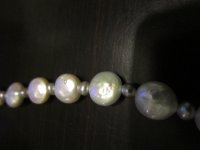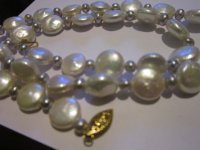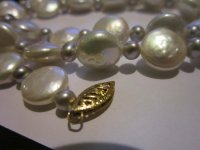TahitianDreamin
Well-known member
- Joined
- Apr 19, 2015
- Messages
- 50
Hello again!
These are called coin pearls right? They actually have the exact same type of 585 clasp as the estate find post from today, with the CN (I thought it looked like a GN) and everything! But these are called Coin Pearls right? Freshwater from China? I'm just listing these on eBay so I want to make sure I'm not listing them incorrectly. And they are dyed freshwater in between right? The white ones have 10mm diameter and the gray are about 4x3mm (they're oval). These came from an estate jewelry lot, I didn't pay much for it. (~60 bucks and there was enough 10k/14k/925 to pay for it fully, these are just extra. )
)
Thanks again!
Edit: Duh I forgot to put the pictures on!!!



These are called coin pearls right? They actually have the exact same type of 585 clasp as the estate find post from today, with the CN (I thought it looked like a GN) and everything! But these are called Coin Pearls right? Freshwater from China? I'm just listing these on eBay so I want to make sure I'm not listing them incorrectly. And they are dyed freshwater in between right? The white ones have 10mm diameter and the gray are about 4x3mm (they're oval). These came from an estate jewelry lot, I didn't pay much for it. (~60 bucks and there was enough 10k/14k/925 to pay for it fully, these are just extra.
Thanks again!
Edit: Duh I forgot to put the pictures on!!!



Last edited:
